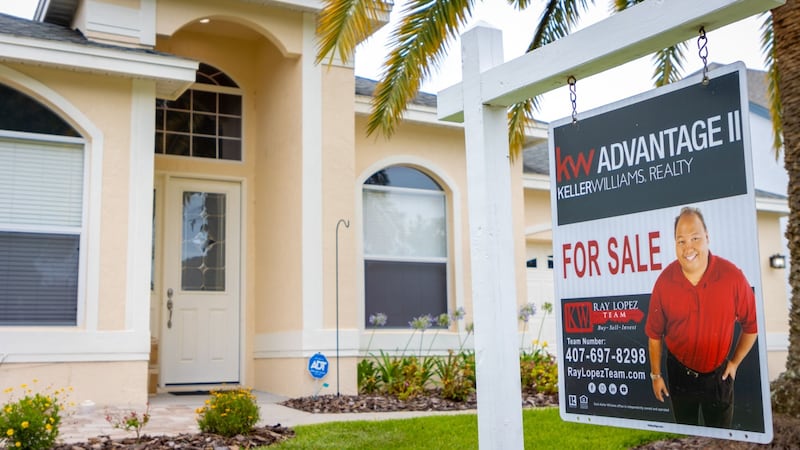ORLANDO, Fla. — Charmaine Chapman practically shudders when she thinks about trying to move to Central Florida. In theory, it should have been easy. She selected the bedroom community of Palm Bay, which traditionally had cheap and plentiful options to pick from.
WATCH: Orange County housing crisis not quite an emergency, new study shows
Instead, she encountered a feeding frenzy.
“It was a hell of a process,” she said, laughing at the ridiculousness of her memories.
>>> STREAM CHANNEL 9 EYEWITNESS NEWS LIVE <<<
Six days per week, Chapman would wake up and tour six or seven homes. She placed offers on four, only to be outbid by investors, buyers offering all cash or people willing to pay significantly more than the house was worth.
On the fifth try, she won out by a mere $1,000.
“That moment was glory,” she said.
What was a singular moment for Chapman lasted 18 months for Central Florida’s sellers. It didn’t matter what condition the house was in or where it was. Thanks to low interest rates and pent-up demand from the pandemic, sellers were going to get paid.
“Anything I put on the market was multiple-offer,” Keller Williams real estate agent Ray Lopez said. “We would’ve had anywhere between 20 to 30 offers.”
WATCH: Congress exploring ways to preserve affordable mobile housing supply
The frenzy drove home values higher and higher. The median listing price in April 2021 was $370,000, according to the Orlando Regional REALTOR Association. Twelve months earlier, the median was just $295,000.
However, Lopez said the glory days are mostly over.
Rising interest rates have cut the number of people willing to purchase a home, including first-time buyers who find themselves unable to make the monthly payments to investors who see less opportunity without being able to offer all cash.
It has given the housing market breathing room and significantly lowered the number of bidding wars, but Lopez said conditions are still hotter than normal. If normal was zero and the peak of the craziness was 10, he estimated the current market hovered around a six.
“We’re just getting back to like a normal summer market,” he said. “We’re slowing compared to an abnormal crazy COVID market.”
In other words: it’s still a seller’s market, but the sellers may have to put a fresh coat of paint on the wall to attract top dollar, he explained.
Competition for homes is still tipping the scales in the seller’s favor. As of April, ORRA reported 2,670 homes on the market, compared to a historical normal of 10,000.
The return to normal will force an adjustment among homeowners accustomed to watching their investment’s value rise. Instead of 25% gains year over year, Lopez said home values should fall slightly after Labor Day as the market settles into its normal offseason.
That doesn’t mean prices will come crashing down to earth, he added. Values may be expected to decrease 5% through December when the next homebuying season begins to heat up and values rise 15%.
“People just got used to the new normal, and not to the normal,” he said. “The norm was going up, and now we’re going to get back to a bell-shaped curve.”
READ: Average long-term US mortgage rates edge down, still over 5%
So, could home values return to their pre-pandemic levels, with buyers trying to exit a spiraling rental market scoring good deals?
Lopez said people shouldn’t get their hopes up.
“As long as more people are moving here than moving out, it will always be desirable,” he said.
That suits people like Chapman fine enough. After her experience, she said she had no plans to test the waters again.
“Definitely not anything I am dying to do again soon,” she said before adding, “And loving the place we’re in now, so it was worth it.”
Click here to download the free WFTV news and weather apps, and click here to watch the latest news on your Smart TV.
©2022 Cox Media Group









